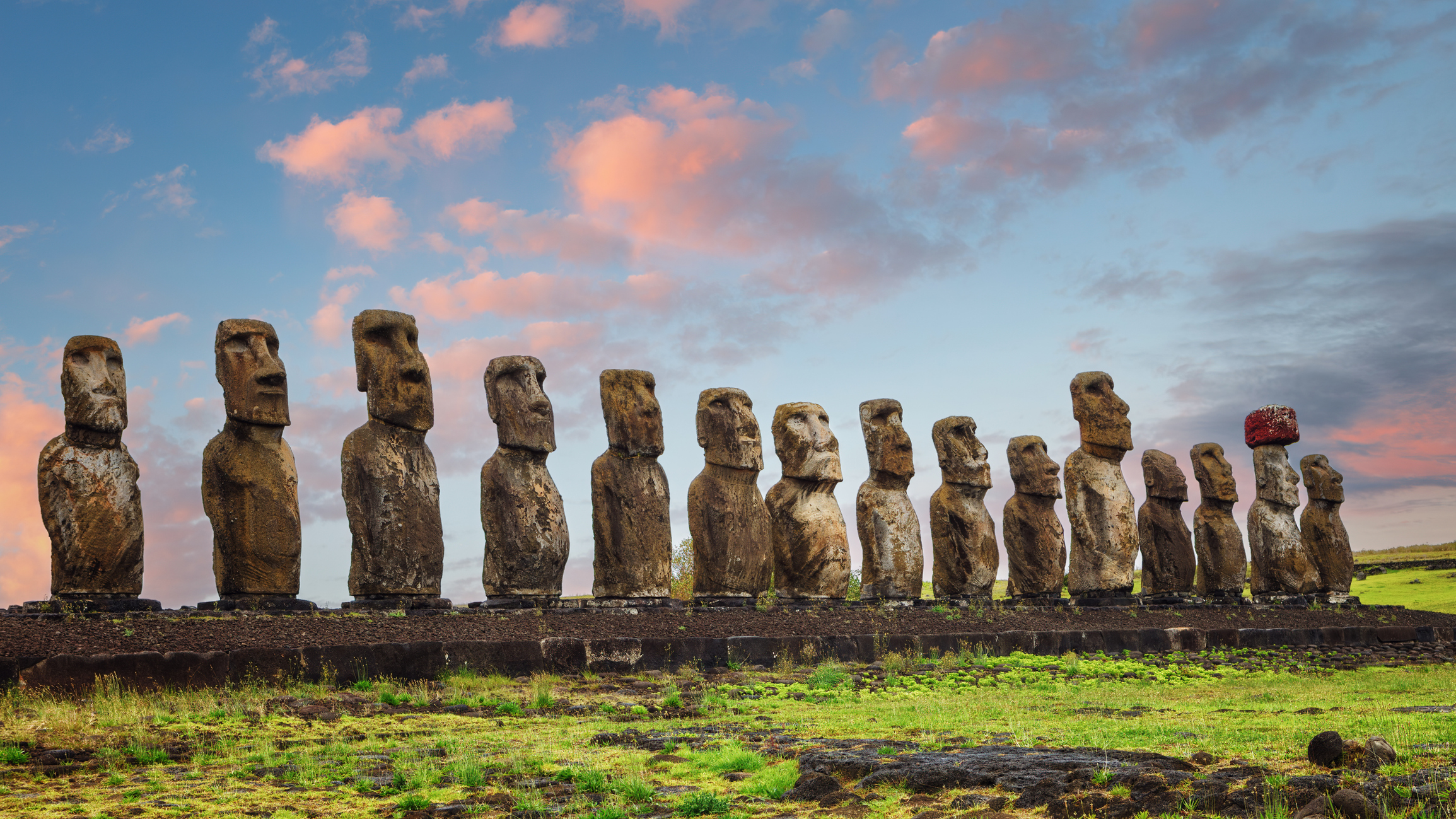Rapa Nui, often referred to as Easter Island, is one of the most remote populated islands in the world. It's so distant that Europeans didn't stumble onto it until centuries after they had started exploring the Pacific. When they arrived, though, they found that the relatively small island supported a population of thousands, one that had built imposing monumental statues called moai. Arguments over how this population got there and what happened once it did have gone on ever since.
Some of these arguments, such as the idea that the island's indigenous people had traveled there from South America, have since been put to rest. Genomes from people native to the island show that its original population was part of the Polynesian expansion across the Pacific. But others, such as the role of ecological collapse in limiting the island's population and altering its culture, continue to be debated.
Researchers have now obtained genome sequence from the remains of 15 Rapa Nui natives who predate European contact. And they indicate that the population of the island appears to have grown slowly and steadily, without any sign of a bottleneck that could be associated with an ecological collapse. And roughly 10 percent of the genomes appear to have a Native American source that likely dates from roughly the same time that the island was settled.
Out of the museum
The remains that provided these genomes weren't found on Rapa Nui, at least not recently. Instead, they reside at the Muséum National d’Histoire Naturelle in France, having been obtained at some uncertain point in the past. Their presence there is a point of contention for the indigenous people of Rapa Nui, but the researchers behind the new work had the cooperation of the islanders in this project, having worked with them extensively. The researchers' description of these interactions could be viewed as a model for how this sort of work should be done:
Throughout the course of the study, we met with representatives of the Rapanui community on the island, the Comisión de Desarrollo Rapa Nui and the Comisión Asesora de Monumentos Nacionales, where we presented our research goals and ongoing results. Both commissions voted in favor of us continuing with the research... We presented the research project in public talks, a short video and radio interviews on the island, giving us the opportunity to inquire about the questions that are most relevant to the Rapanui community. These discussions have informed the research topics we investigated in this work.
Given the questionable record-keeping at various points in the past, one of the goals of this work was simply to determine whether these remains truly had originated on Rapa Nui. That was unambiguously true. All comparisons with genomes of modern populations show that all 15 of these genomes have a Polynesian origin and are most closely related to modern residents of Rapa Nui. "The confirmation of the origin of these individuals through genomic analyses will inform repatriation efforts led by the Rapa Nui Repatriation Program (Ka Haka Hoki Mai Te Mana Tupuna)," the authors suggest.
A second question was whether the remains predate European contact. The researchers attempted to perform carbon dating, but it produced dates that made no sense. Some of the remains had dates that were potentially after they had been collected, according to museum records. And all of them were from the 1800s, well after European contact and introduced diseases had shrunk the native population and mixed in DNA from non-Polynesians. Yet none of the genomes showed more than one percent European ancestry, a fraction low enough to be ascribed to a spurious statistical fluke.
So the precise date these individuals lived is uncertain. But the genetic data clearly indicates that they were born prior to the arrival of Europeans. They can therefore tell us about what the population was experiencing in the period between Rapa Nui's settlement and the arrival of colonial powers.
Back from the Americas
While these genomes showed no sign of European ancestry, they were not fully Polynesian. Instead, roughly 10 percent of the genome appeared to be derived from a Native American population. This is the highest percentage seen in any Polynesian population, including some that show hints of Native American contact that dates to before Europeans arrived on the scene.
Isolating these DNA sequences and comparing them to populations from across the world showed that the group most closely related to the one who contributed to the Rapa Nui population presently resides in the central Andes region of South America. That's in contrast to the earlier results, which suggested the contact was with populations further north in South America.



3175x175(CURRENT).thumb.jpg.b05acc060982b36f5891ba728e6d953c.jpg)
Recommended Comments
There are no comments to display.
Join the conversation
You can post now and register later. If you have an account, sign in now to post with your account.
Note: Your post will require moderator approval before it will be visible.